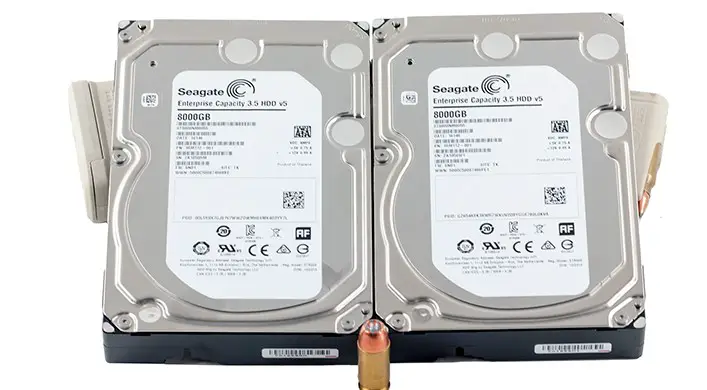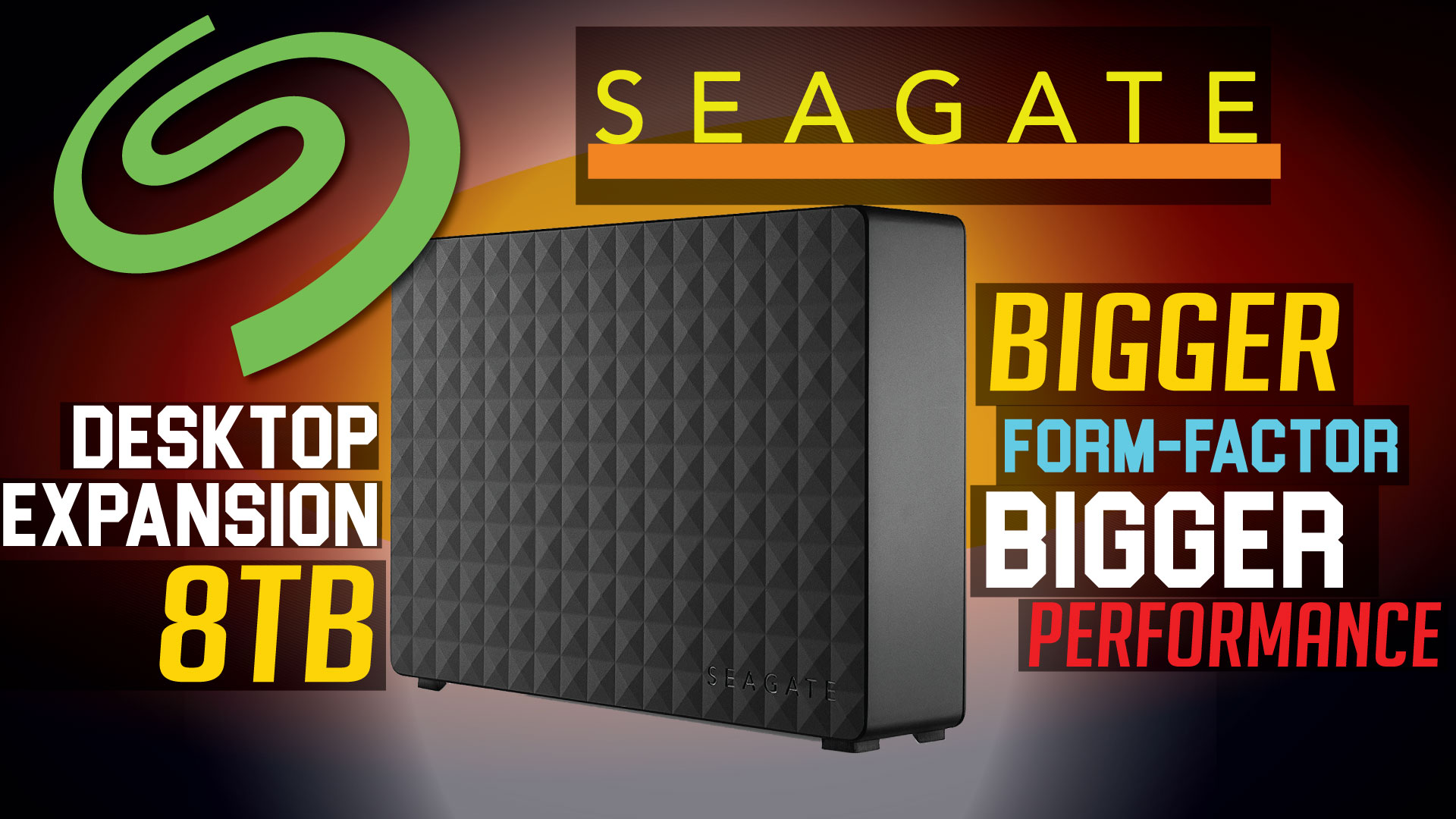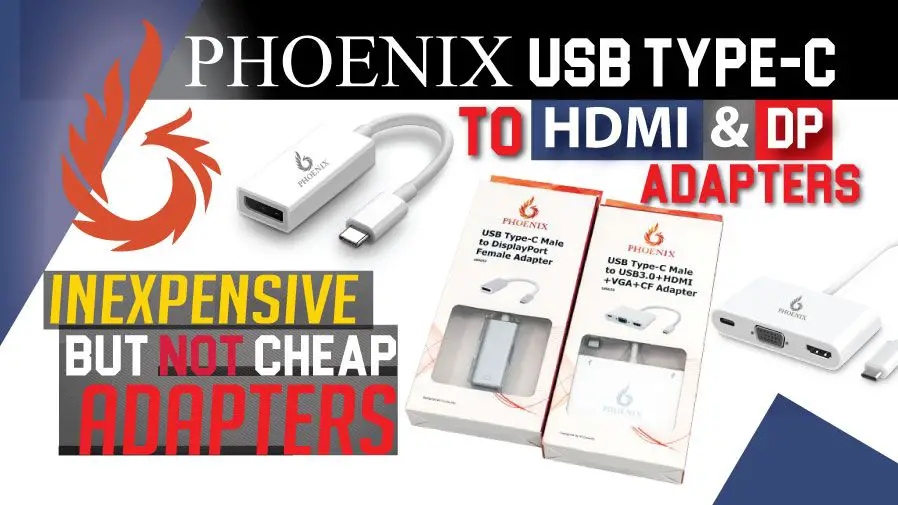As with all SATA 3.5″ form-factored hard drives, the recently released version 5 of the Enterprise Capacity 3.5 series by Seagate uses a robust and extremely durable black and silver chassis. Also like a typical hard drive, attached to the bottom is a small Printed Circuit Board that houses all the necessary controller components used with this little power house.
Just like its predecessor the – award winning EC v4 3.5 – the v5’s chassis is almost flat and is bereft of ridges usually seen on most hard drives models. This is because Seagate’s engineers once again needed a way fit six platters inside a footprint really only meant for – at most – five platters. More importantly they had to ensure that the ensuing design was stable and sturdy enough to handle the stress that only the Enterprise market can place upon a drive.
In order to pull of this rather impressive engineering feat Seagate engineers had to overcome some pretty large obstacles. The largest of which is turbulence. It may not like such a big deal, but when you have high velocity spinning platters in close proximity to one another the actual weight of the ‘air’ hitting each of these delicately balanced platters can make a massive difference. In a standard design the only way to ensure that six platters do not become unstable and slam into each other is buy removing all the ‘air’, replacing it with Helium and then sealing the entire chassis. Such methods are usually called ‘silver bullets’ and rarely work as well as they should in the real world. This is why Seagate has once again not used exotic gasses and instead gone with a more conservative approach that has proven to be reliable in the past.
To be more specific Seagate has carried over many of the design features that allowed the v4 series to boast 6 platters… and then improved upon them. For example, the new v5 boasts an improved internal inertia actuator as well as a slightly more capable turbulence reducing top disk separator plate. Equally important is the anti-vibration sensors on PCB are now even more precise and accurate at first sensing and then in real time compensating for any vibrations. This combination is potent that it allows the new v5 to boast even better durability specifications than its predecessor.
To be precise the previous v4 Enterprise Capacity 3.5 6TB was rated for a very impressive Mean Time Between Failure of 1.4 million hours, could handle up to 500TB of writes per year, and came with a 5 year no hassle warranty that Seagate’s Enterprise drives have always been known for. The new Enterprise Capacity 3.5 v5 8TB model on the other hand has the MTBF boosted by 42.9 percent to a whopping two million hours, the total drive writes is now up to 550TB per year, and this drive still comes with Seagate’s excellent Enterprise grade 5 year warranty.
These improvements alone are indeed impressive but there are actually two more that are included with this new series. The first is even though this is an Enterprise grade hard drive with actually better durability and performance specifications than its predecessor, it also a drive that uses noticeably less power. Specifically, this new model is rated to use 10.6 watts instead of 11.27 watts of power most Enterprise drives use. This reduction may not sound like that big a deal but when dealing with hundreds of drives, the power and cooling savings do indeed add up. This is especially true when you consider that these new v5 series boasts an amazing 1.3 watts of power per Terabyte – or a forty six percent reduction over the v4 level.
The other improvement is in the aerial density of the six platters Seagate uses. The last generation v4 made use of fairly impressive 1TB platters. However, in a single generation Seagate has increased the density by 25% to an astonishing 1.25TB per platter. This not only increases the overall capacity, but is what allows this drive to boast some awfully impressive performance numbers. Equally important is this has been accomplished without using exotic techniques like Heat Assisted Magnetic Recording. Techniques which may indeed boost aerial density but are untested with unknown reliability levels compared to more mature technology used in this series.
Of course helping boost performance even higher than ever before is the fact that Seagate has not only once again doubled the onboard cache to 256MB, and used much more potent controller, but the actual algorithms have also been improved. In testing this combination proved to be extremely potent as the drives almost seemed to be precognizant at guessing what data would be called upon next and moving it to the much faster internal cache array before being needed.
With so much data on the line Seagate is also highly aware that even one drive dyeing means the potential for a lot of a data disappearing. To be blunt, even if the data is secure via RAID the rebuild time is going to be rather long when dealing with eight Terabytes of data! That is why the new Enterprise Capacity 3.5″ v5 8TB makes use of Super Parity ECC. In a nutshell what Seagate’s SP ECC does is add an additional parity bit on top of the normal ECC parity. This extra error correction allows the drive to boast an uncorrectable error rate of 1 per 10 to the 15th power – or 1 uncorrectable bit per 125TBs of writes. This means that even with TLER enabled by default, for enthusiasts not using the Enterprise Capacity 3.5″ v5 8TB on a hardware RAID controller that the chances of an uncorrectable error happening is so small as to be not worth worrying about.















